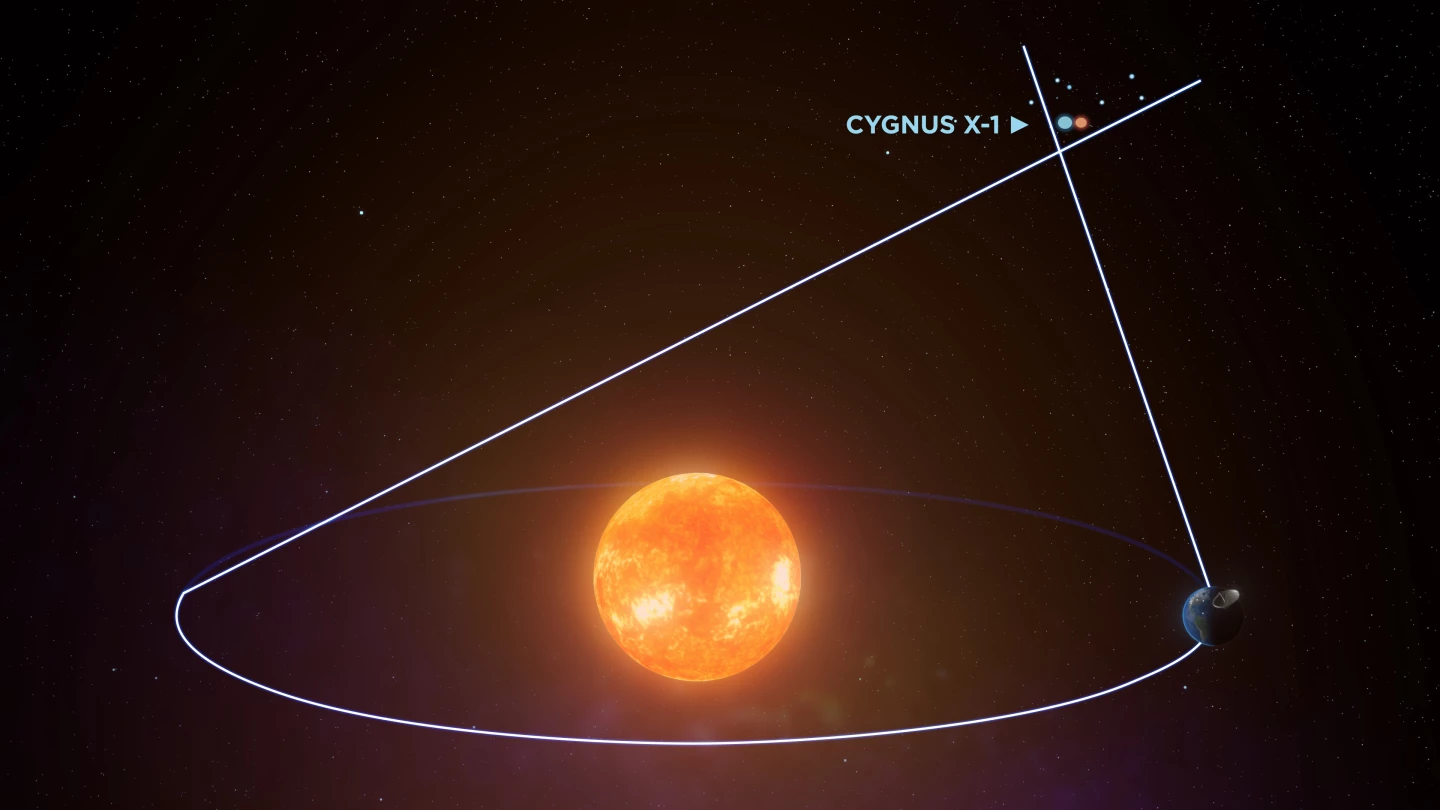New observations have shown that Cygnus X-1, the first black hole ever discovered, is much more massive than previously estimated. By making a more precise measurement of its distance from the Earth, a team led by the International Centre for Radio Astronomy Research (ICRAR) has concluded that the black hole is the most massive ever detected without using gravitational waves.
The idea of a black hole has been around since 1784 when the English clergyman John Michell speculated that a large enough star might have a strong enough gravitational field to hold in light. In the 20th century, scientists building on Albert Einstein's general theory of relativity developed the theory that a massive enough star could collapse in on itself until it literally vanishes from the universe, leaving behind a singularity within which the laws of nature no longer apply.
It was a dramatic idea, but it wasn't until 1964 that the first of these was discovered when a sounding rocket lifted off from the White Sands Missile Range in New Mexico, carrying a pair of Geiger counters. These detected gamma rays being emitted from a spot in the constellation of Cygnus. Further observation over the next few decades indicated that this was a black hole, now called Cygnus X-1.

The new ICRA study is based on observations from the Very Long Baseline Array, which is made up of 10 radio telescopes spread across the United States. Combining their signals turns them into a single radio telescope as wide as the North American continent, and over six days it was used to monitor Cygnus X-1 as it orbited its companion binary star. By comparing these new observations against similar ones collected in 2011, the distance the Earth has traveled in between produced a large enough baseline to measure the difference in angles of the Cygnus X-1 System, allowing the astronomers to more accurately estimate its distance from us.
And they found that Cygnus X-1 is farther away than previously thought – 7,240 light years instead of 6,100. Using this new distance, it was possible to recalculate the black hole's mass, which is not only much larger, but will also require a reassessment of our understanding of how stars lose their mass as they age.
"Stars lose mass to their surrounding environment through stellar winds that blow away from their surface," says Ilya Mandel from Monash University and the ARC Centre of Excellence in Gravitational Wave Discovery (OzGrav). "But to make a black hole this heavy, we need to dial down the amount of mass that bright stars lose during their lifetimes.
"The black hole in the Cygnus X-1 system began life as a star approximately 60 times the mass of the Sun and collapsed tens of thousands of years ago. Incredibly, it’s orbiting its companion star – a supergiant – every five and a half days at just one-fifth of the distance between the Earth and the Sun. These new observations tell us the black hole is more than 20 times the mass of our Sun – a 50 per cent increase on previous estimates."
The research was published in Science, and the video below discusses Cygnus X-1.
Source: ICRAR







